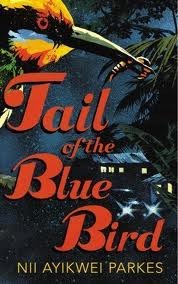Sonokrom, a village in the Ghanaian hinterland, has not changed for thousands of years. Here, the men and women speak the language of the forest, drink aphrodisiacs with their palm wine and walk alongside the spirits of their ancestors. The discovery of sinister remains; possibly human, definitely 'evil'; in a vanished man's hut brings the modern world into the village in the form of Kayo; a young forensic pathologist convinced that scientific logic can shatter even the most inexplicable of mysteries. But as events in the village become more and more incomprehensible, Kayo and his sidekick, Constable Garba, find that Western logic and political bureaucracy are no longer equal to the task in hand. Strange boys wandering in the forest, ghostly music in the night and a flock of birds that come from far away to fill the desolate hut with discarded feathers take the newcomers into a world where, in the unknown, they discover a higher truth that leaves scientific explanations far behind
Goodreads description
It seems to me that detective stories offer excellent opportunities for magic realism, indeed so much so that there seems to be a subgenre of magic-realist mysteries. This is because detection tends to be seen as rational and even scientific (especially as in this novel, when the central character is a forensic scientist), and these qualities can be counterpointed by the magical element in the story.
As an exercise I started a list of magic-realist mysteries. It includes:
Of these probably Colin Cotterill's novels are the closest to Tail of a the Blue Bird - both have central characters who are forensic scientists and both operate with native cultures that have strong beliefs in ancestral spirits. In both there is a political element - Dr Siri deals with the communist government of Laos and Kayo (Parkes' young scientist) has to deal with a corrupt system, embodied by the ruthless Inspector Donkor who employs Kayo to come up with the "right" solution to the case. Interestingly this political element is contrasted both with the scientific truth being sought by the protagonists and the magical truth of the ancient beliefs.
The ages-old world of Sonokrom is vivdly evoked by Parkes' rich language. It is not surprising that he is better known as a poet than as a novelist. The village characters talk in proverbs and folktales, both presented in the Ghanian version of English, without translation. The novel is in many ways a journey into an older and somewhat disorientating world. By taking the reader on this journey Parkes leads to the magic solution to the mystery, which would have been unthinkable at the beginning of the book.
I really enjoyed this book, which I read in just two sittings.

No comments:
Post a Comment